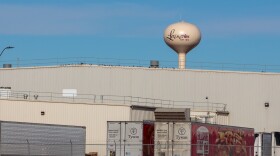The findings of a new, long-term academic study may lay some farmers’ fears to rest: farming regeneratively, or farming in ways that benefits soil, water and air quality, doesn’t have to come at the expense of crop yield.
A team of researchers spanning from the United Kingdom to Africa compared data from 30 different long-term experimental farm plots in order to compare “ecological intensification” practices against the use of chemical fertilizers. The study ultimately found that when certain practices are implemented — like diversifying crop rotations and adding manure or compost to soil — the need for chemical fertilizer lessens.
“You don't have to sacrifice yields for your farm practices to be more sustainable,” said study lead author Chloe MacLaren.
The study comes at an important moment. With the threat of a global food crisis due to the war in Ukraine, these findings are particularly relevant, MacLaren said.
“People here are saying, well, we need to just produce as much as possible and forget about sustainability for a while,” she said. “But this study really shows that you can do both at the same time.”
None of the 30 experimental farm plots were based in the United States, though researchers did examine effects on both winter and spring wheat and corn yields. But the lack of more local data is leaving some researchers wondering about the applicability of the findings here in the Midwest.
“When it comes to agriculture, there is no one size that fits all,” said Fred Below, professor of crop physiology at the University of Illinois.
That’s especially true on large, conventional farms in the Midwest that can span thousands of acres. Certain ecological intensification practices don’t make financial sense on farms like that, Below said.
Take manure application, for example. While it may make sense to have manure-producing livestock on a smaller-scale farm, it’s far more burdensome – financially and physically – to do that over thousands of acres, Below argues.
And some Midwestern farmers agree, arguing the finances just aren’t there yet to implement these practices on such a large scale.
“Yes, we can go to regenerative farming, but you have to do it with a profit motive in mind,” said Ken Dalenberg, who grows corn and soybeans in central Illinois.
Dalenberg puts a lot of thought into how much fertilizer he’s applying, especially given its sky-high cost earlier this year. His motivation is primarily economic, he said.
“[It’s] not necessarily maximizing profitability from a fertilizer perspective, but trying to grow the highest yield with the least amount of fertilizer,” he said.
As for other ecological intensification practices, like cover cropping, Dalenberg’s not ready to take on the financial risk.
“Having watched how they work for various people in the community and the outcomes from that, especially when you get a wet spring, like this year, or if you don't have adequate weed control, it's gonna cost you big time in yield,” he said. “You cannot afford that today, unless you're independently wealthy and your income stream comes from something other than agriculture.”
Lead author MacLaren said reducing the need for chemical fertilizers is the financial incentive.
“Even though it seems difficult, and might be expensive to set up, perhaps in the long run, that means that your profits are going to be higher,” she said.
Follow Dana on Twitter: @DanaHCronin
This story was produced in partnership with Harvest Public Media, a collaboration of public media newsrooms in the Midwest. It reports on food systems, agriculture and rural issues. Follow Harvest on Twitter: @HarvestPM.
Copyright 2022 KCUR 89.3. To see more, visit KCUR 89.3. 9(MDA4OTAxNzAzMDEzMjc0MTc2MzA5ZDZlMw004))








